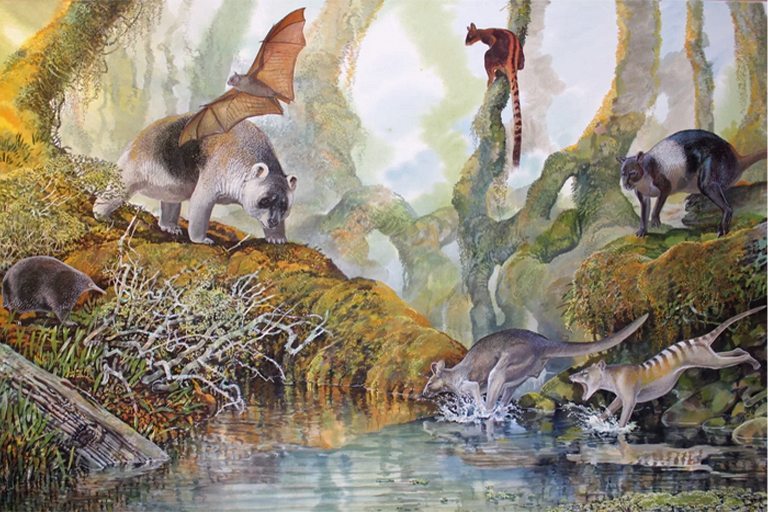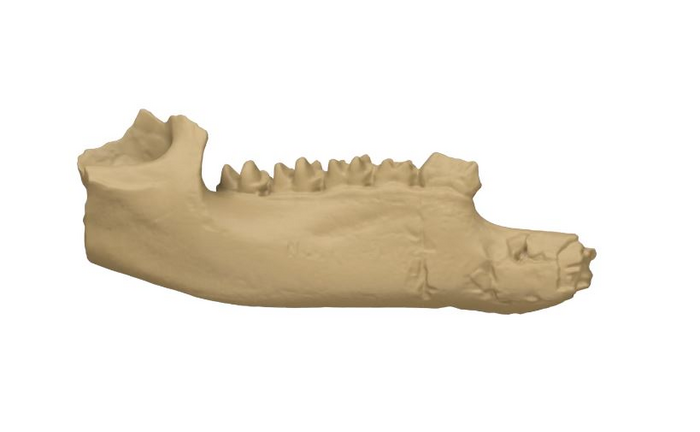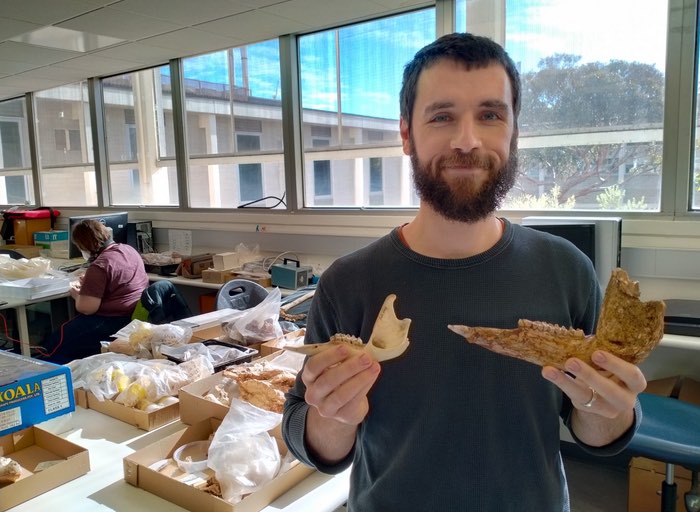From Mongabay Magazine,
Edited by - Vinuri Randhula Silva,
Illustration courtesy Peter Schouten.
The animals that live in the world today also have extinct relatives that lived thousands or millions of years ago. We know about these extinct species because we find their fossils.
A team of paleontologists from Flinders University in Australia has used a fossil to identify a previously unknown type of primitive giant kangaroo. This giant kangaroo lived in the rainforests of New Guinea.
This is an artist’s impression of the new kangaroo:
Can you find this kangaroo in the forest scene below?
Artist’s impression of Nombe Rockshelter megafauna, showing the Nombe kangaroo on the right. Illustration courtesy Peter Schouten.
About 5 – 8 million years ago, the island of New Guinea was connected to mainland Australia by a land bridge. At that time, sea levels were lower than they are now.
Today, the islands of New Guinea and Australia are separated by a body of water called the Torres Strait. There are no longer large kangaroo species in New Guinea. However, Australia is home to large kangaroos like the red kangaroo and the grey kangaroo.
When New Guinea and Australia became isolated from each other, the kangaroos and other plant and animal species that were once connected started following different evolutionary pathways.
For example, the marsupials (kangaroos and other related pouched mammal species) found on New Guinea are often smaller and stockier than their Australian counterparts. This size and body shape difference likely evolved because the New Guinean marsupials lived in a dense forest habitat, as opposed to Australia’s arid grasslands.
The newly discovered giant species of kangaroo was on a different evolutionary pathway than its giant kangaroo cousins in Australia.
The New Guinea giant kangaroo species was discovered by examining a fossil jawbone. The team of scientists found that the molar teeth of this jawbone were distinctly different from other fossil kangaroos. This led them to conclude that they were looking at a previously undiscovered kangaroo, most likely unique to New Guinea. The new giant fossil kangaroo genus is named Nombe.
Think like a paleontologist!
If you wanted to find a new fossil relative of your favorite living plant or animal species, where would you look for it? What body part or parts of the organism would you examine to determine if it were a different species from the living species?
Adapted from an article by Jim Tan, published on Mongabay.com:
Citation:
Kerr, I. A., & Prideaux, G. J. (2022). A new genus of kangaroo (Marsupialia, Macropodidae) from the late Pleistocene of Papua New Guinea. Transactions of the Royal Society of South Australia, 1-24. doi:10.1080/03721426.2022.2086518




Comments
Post a Comment